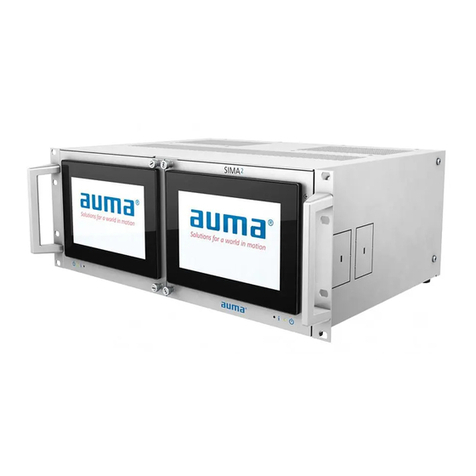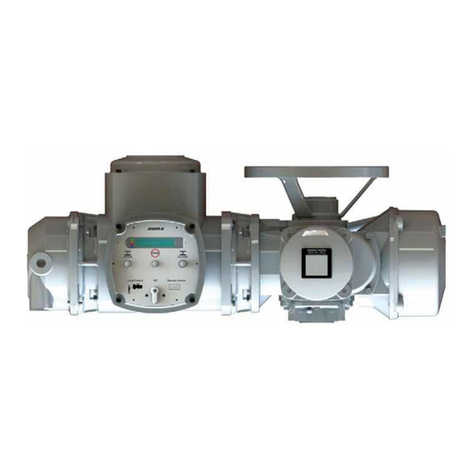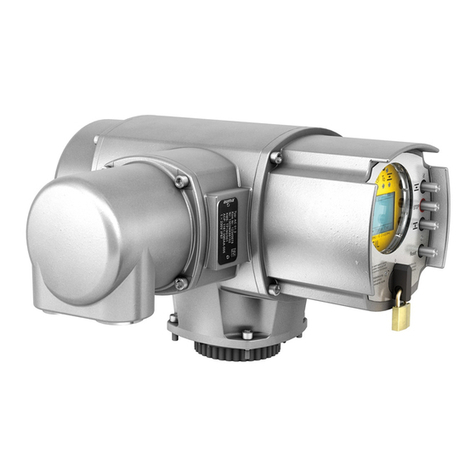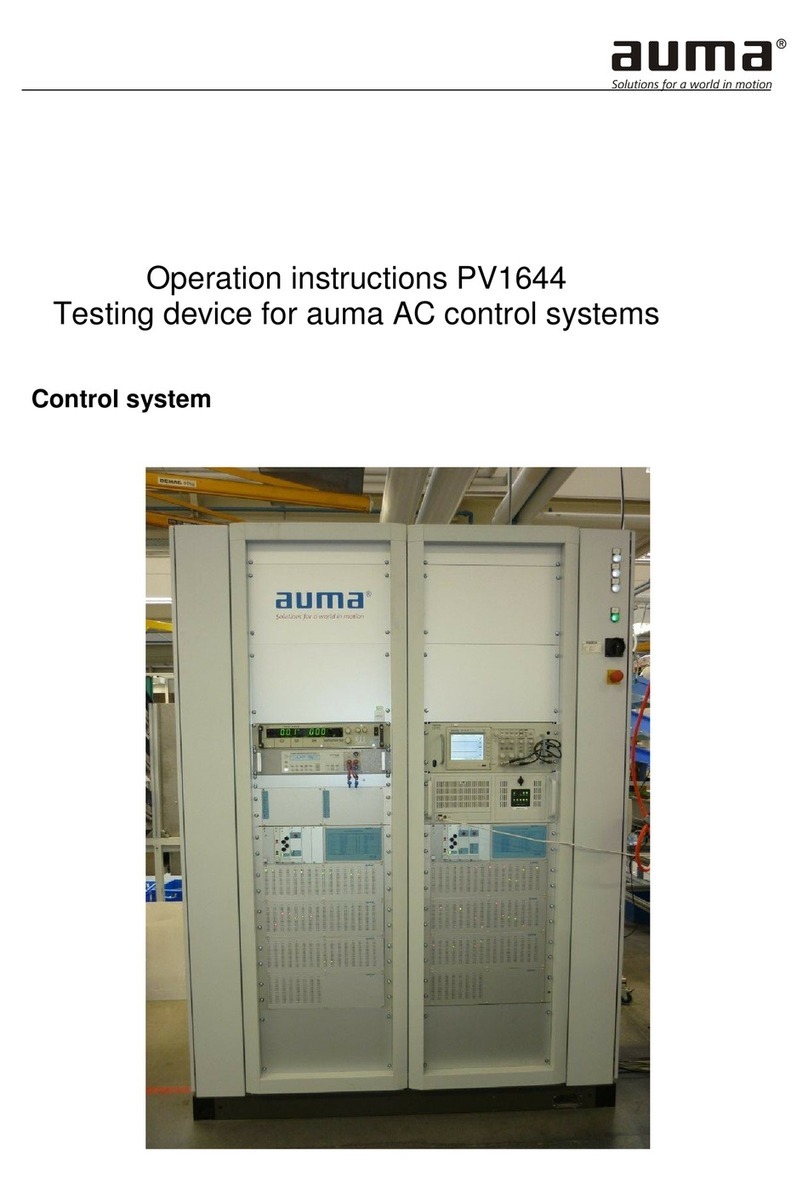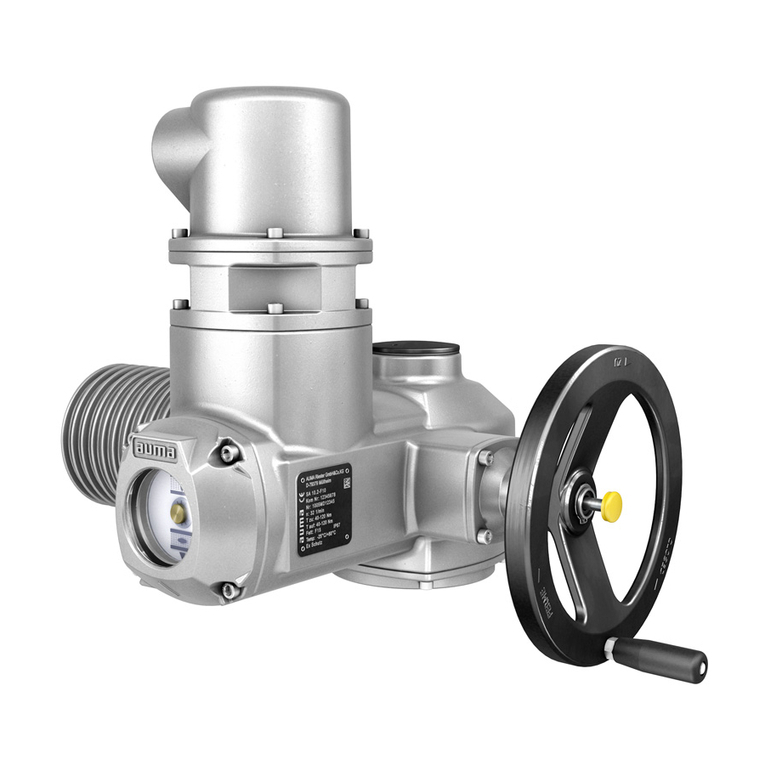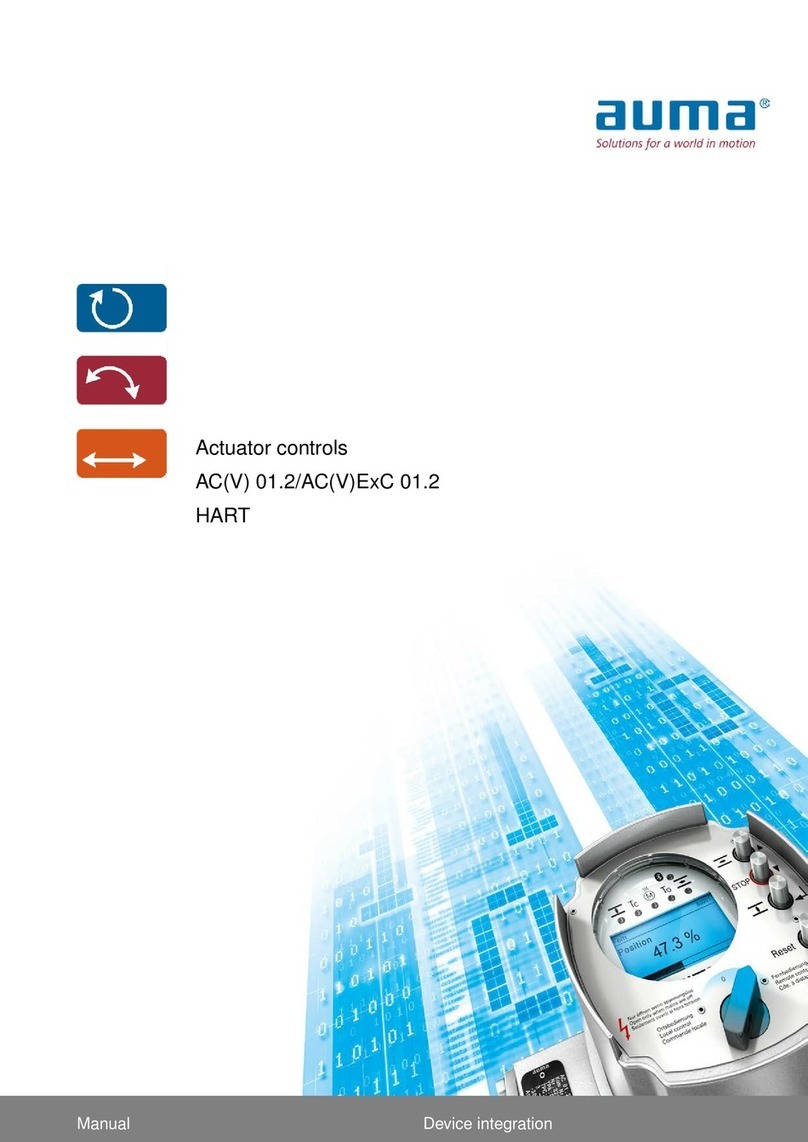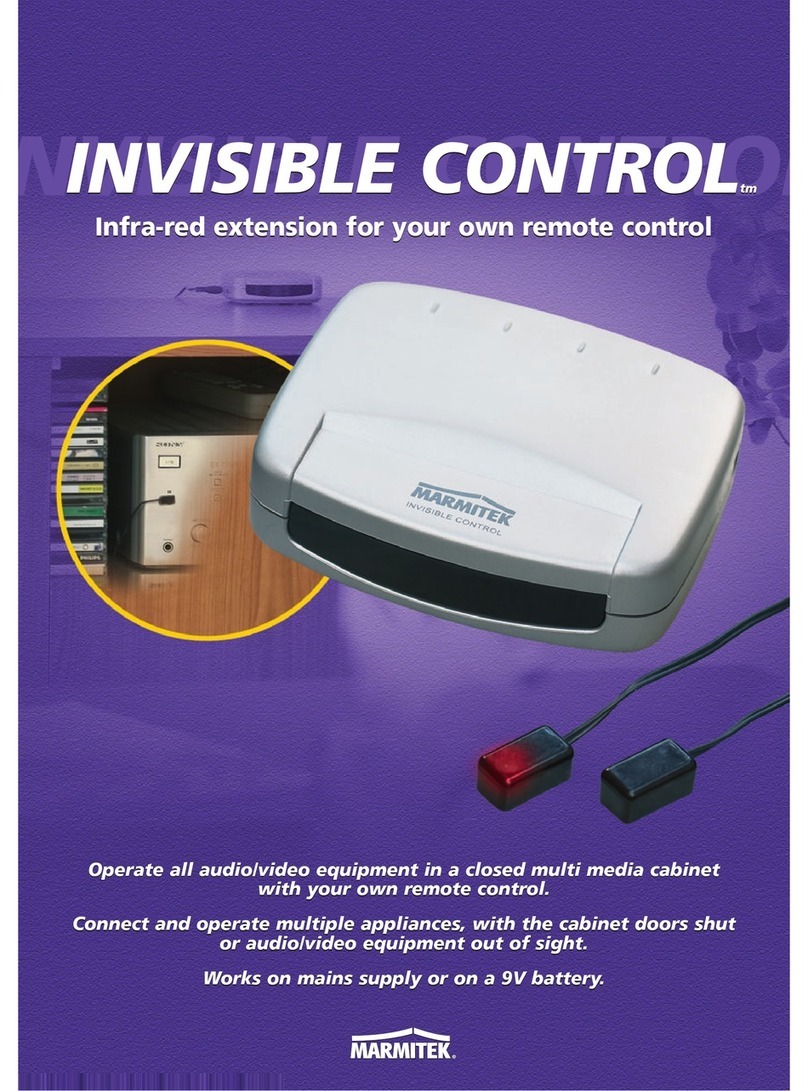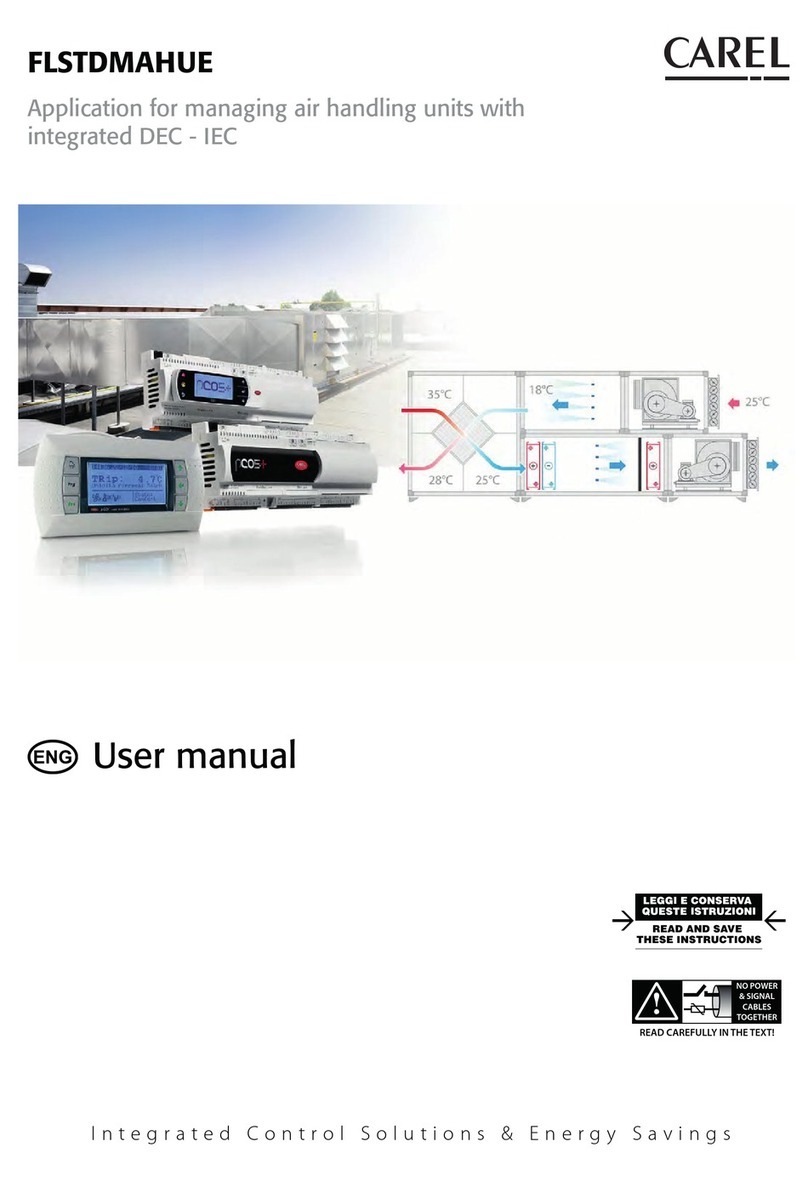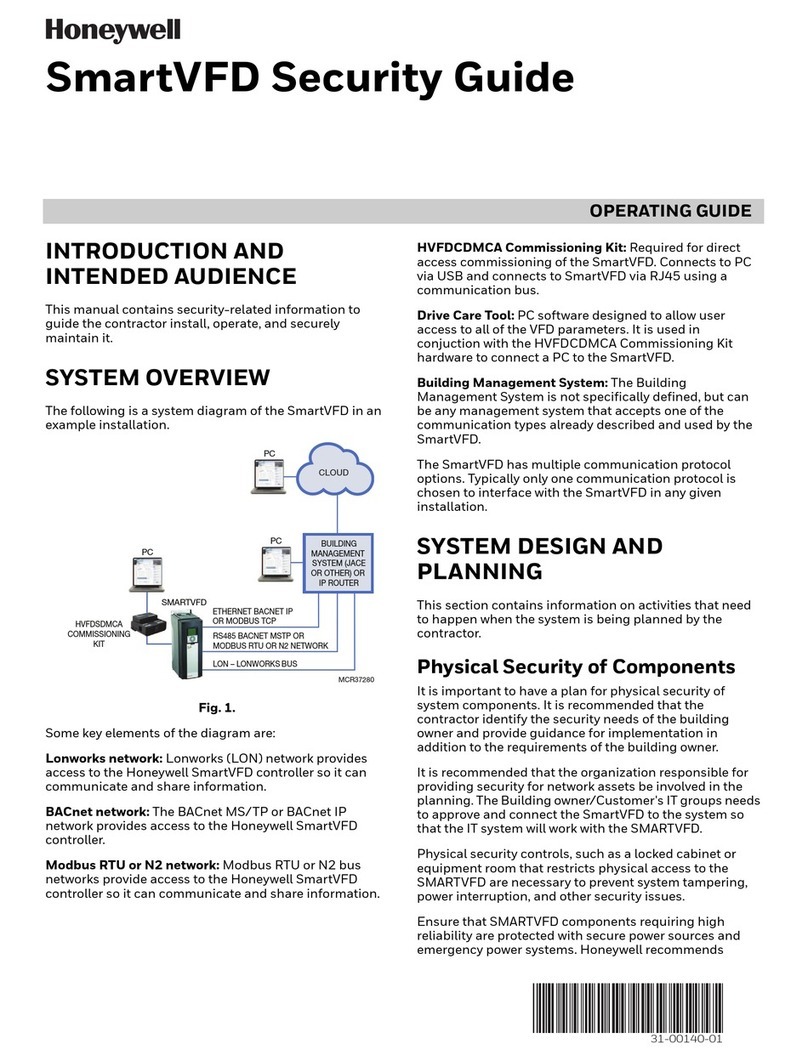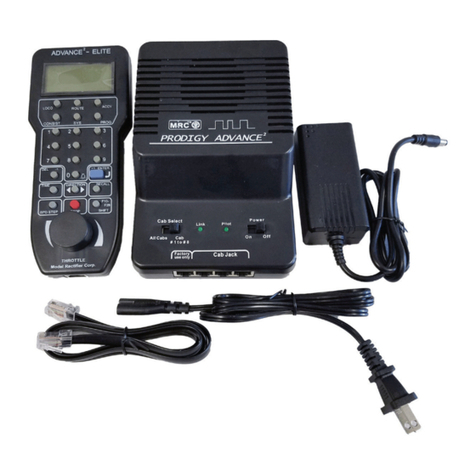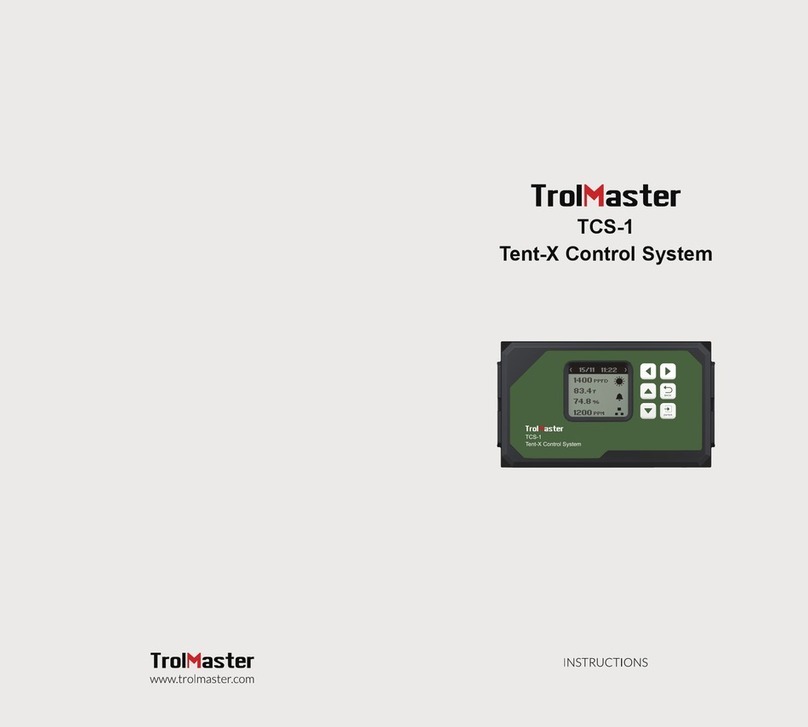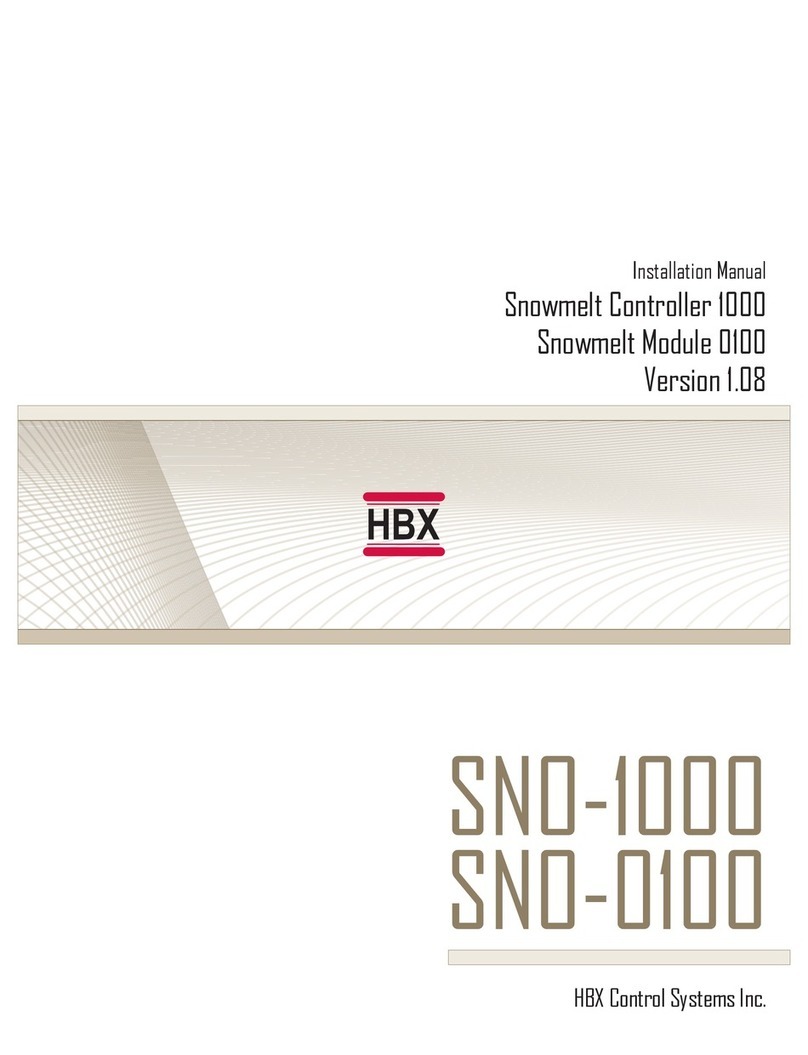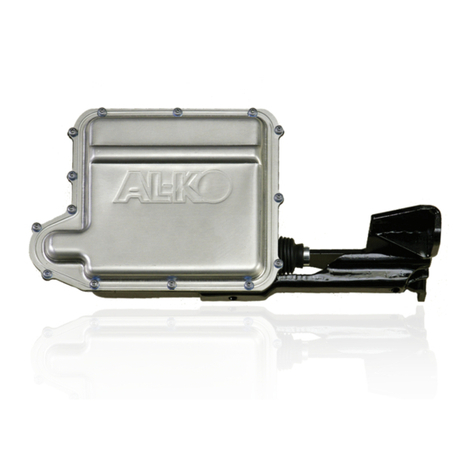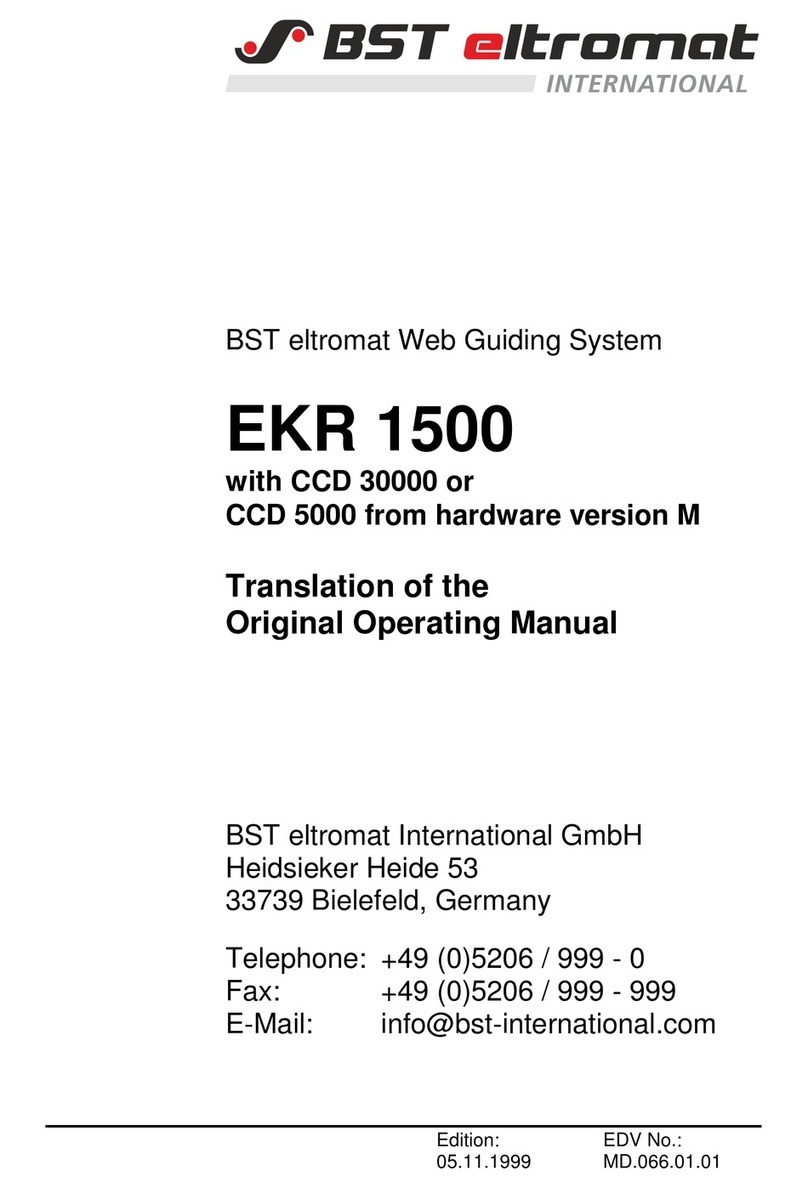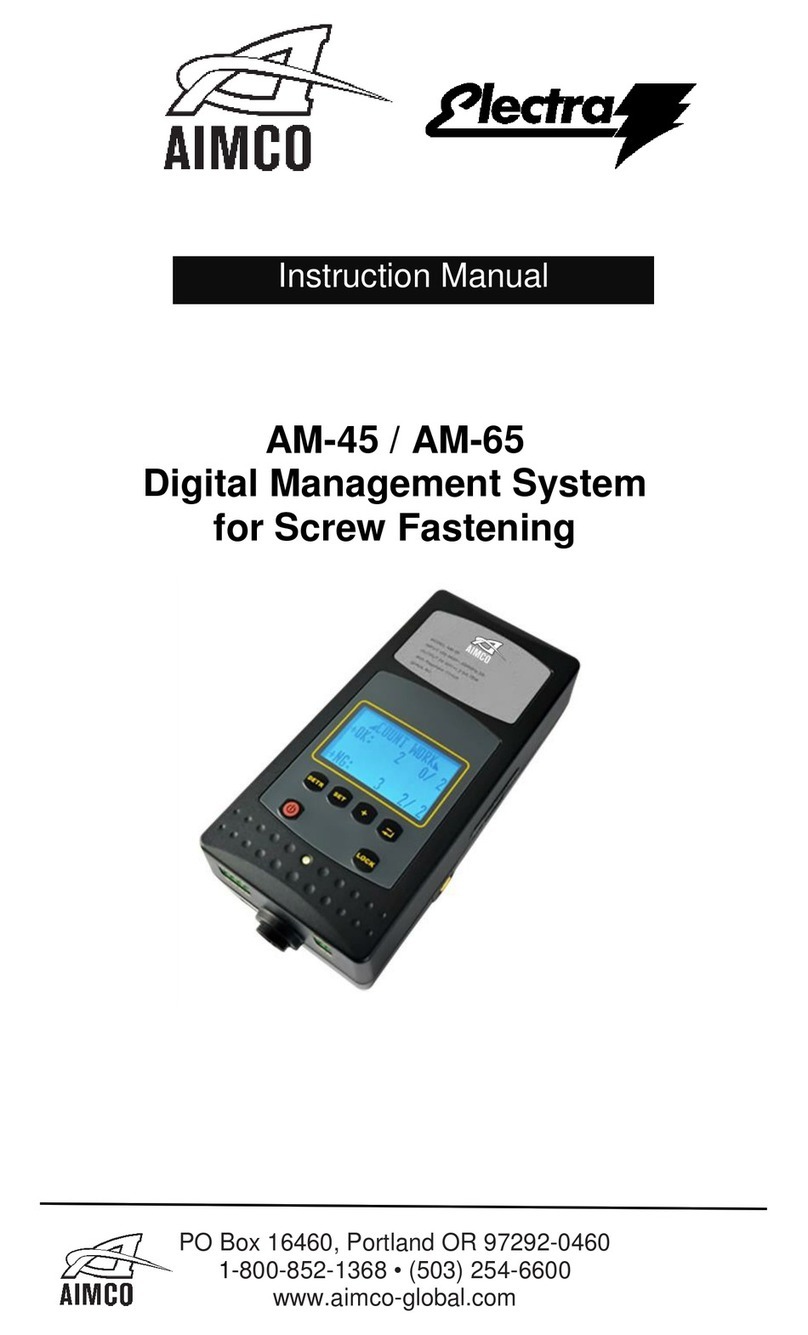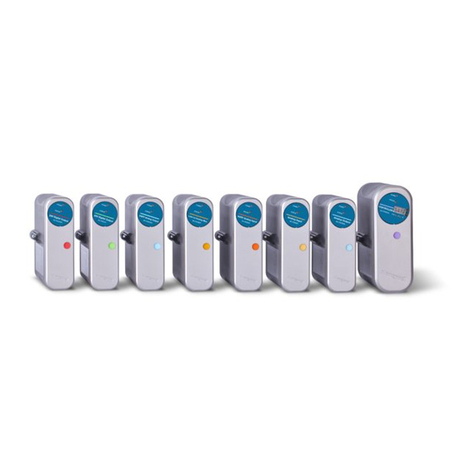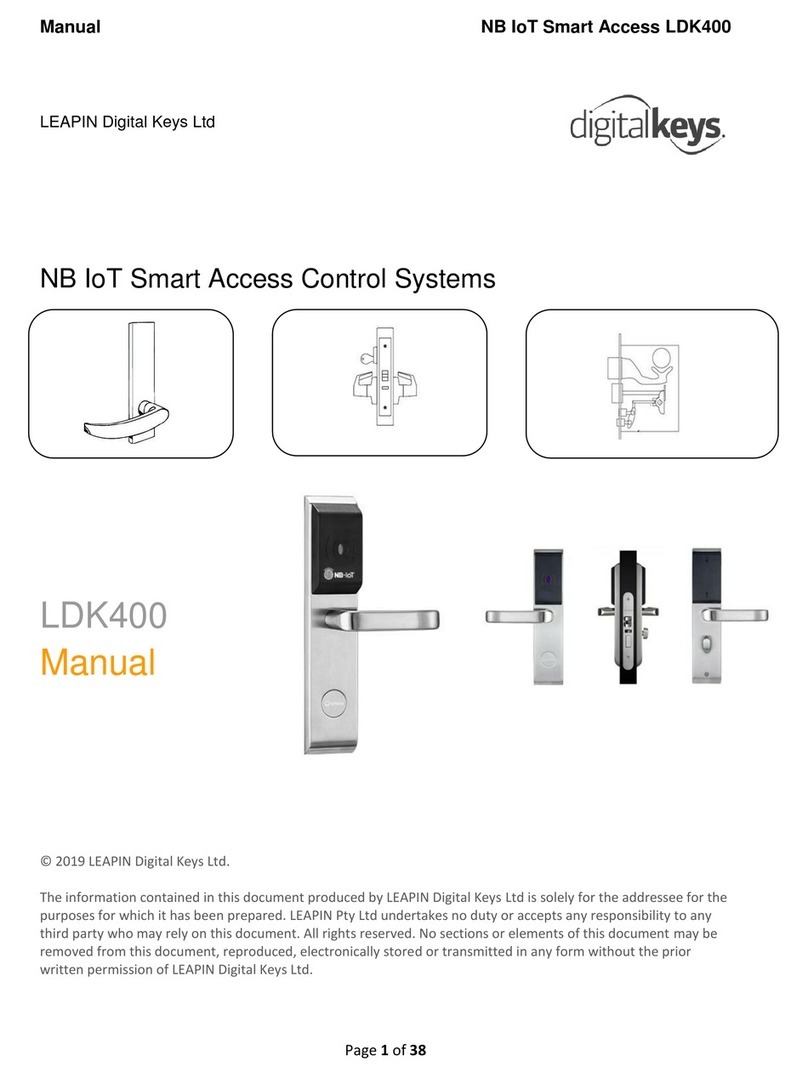AUMA AC(V) 01.2 User manual

Actuator controls
AC(V) 01.2/AC(V)ExC 01.2
Profibus DP
Device integrationManual

Read operation instructions first.
●Observe safety instructions.
Purpose of the document:
This document contains information for the commissioning staff of the distributed control system and DCS software
engineers.This document is intended to support the actuator integration into the DCS via fieldbus interface.
Reference documents:
●Operation instructions (Assembly and commissioning) for the actuator
●Manual (Operation and setting) AC 01.2 actuator controls Profibus DP
Reference documents can be downloaded from the Internet (www.auma.com) or ordered directly from AUMA
(refer to <Addresses>).
Table of contents Page
41. Safety instructions................................................................................................................. 41.1. Prerequisites for the safe handling of the product 51.2. Range of application 51.3. Warnings and notes 51.4. References and symbols
72. General information about Profibus DP............................................................................... 72.1. Basic characteristics 72.2. Basic functions of Profibus DP 72.3. Transfer mode 72.4. Bus access 72.5. Functionality 82.6. Protective functions 82.7. Device types
93. Commissioning...................................................................................................................... 93.1. Introduction 103.2. Parameter setting 113.3. Bus address (slave address) 113.4. Configuring the Profibus DP interface 123.5. Communication start-up 123.6. AUMA user parameters (AUMA specific parameters) 123.6.1. Process representation input arrangement (user parameters) 133.6.2. Settable (user definable) signals 183.6.3. Additional (user-definable) parameters (option) 183.6.4. Further adaptation options 193.7. Communication monitoring 193.7.1. Connection monitoring of the Profibus DP communication 193.7.2. Fail Safe and Global Control Clear telegrams 193.8. I & M functions
214. Description of the data interface ......................................................................................... 214.1. Input data (process representation input) –signals 214.1.1. Process representation input (default process representation) 234.1.2. Description of the bytes in the process representation input 354.2. Output data (process representation output) 354.2.1. Process representation output arrangement
2
Actuator controls
Table of contents AC(V) 01.2/AC(V)ExC 01.2 Profibus DP

364.2.2. Description of the output data 414.3. Profibus DP V1 services 424.4. Redundancy 424.4.1. Redundant behaviour according to AUMA redundancy 444.4.2. Redundant behaviour according to Profibus DP-V2 redundancy (PNO guideline 2.212)
454.5. Profibus DP-V2 functions 464.5.1. Profibus DP-V2 redundancy 484.5.2. Profibus DP-V2 time-synchronisation with time stamp
535. Description of the Profibus DP board.................................................................................. 535.1. Indications (indication and diagnostic LEDs)
556. Corrective action.................................................................................................................... 556.1. Troubleshooting 566.2. Diagnostics
587. Technical data......................................................................................................................... 587.1. Profibus DP interface
608. Appendix................................................................................................................................. 608.1. Proposed wiring diagram for external sensors, 2-wire technology 618.2. Proposed wiring diagram for external sensors, 3-wire technology 628.3. Proposed wiring diagram for external sensors, 4-wire technology 638.4. Parameters
91Index........................................................................................................................................
3
Actuator controls
AC(V) 01.2/AC(V)ExC 01.2 Profibus DP Table of contents

1. Safety instructions
1.1. Prerequisites for the safe handling of the product
Standards/directives The end user or the contractor must ensure that all legal requirements, directives,
guidelines, national regulations and recommendations with respect to assembly,
electrical connection, commissioning and operation are met at the place of installation.
They include among others:
●Standards and directives such as IEC 60079 “Explosive atmospheres":
- Part 14: Electrical installations design, selection and erection.
- Part 17: Electrical installations inspection and maintenance.
●Applicable configuration guidelines for fieldbus applications.
Safety instructions/
warnings All personnel working with this device must be familiar with the safety and warning
instructions in this manual and observe the instructions given. Safety instructions
and warning signs on the device must be observed to avoid personal injury or property
damage.
Qualification of staff Assembly, electrical connection, commissioning, operation, and maintenance must
be carried out by suitably qualified personnel authorised by the end user or contractor
of the plant only.
Prior to working on this product, the staff must have thoroughly read and understood
these instructions and, furthermore, know and observe officially recognised rules
regarding occupational health and safety.
Work performed in potentially explosive atmospheres is subject to special regulations
which have to be observed.The end user or contractor of the plant is responsible
for respect and control of these regulations, standards, and laws.
Electrostatic charging Highly efficient charge generating processes (processes more efficient than manual
friction) on the device surface must be excluded at any time, since they will lead to
propagating brush discharges and therefore to ignition of a potentially explosive
atmosphere.
This also applies to fireproof coatings or covers available as an option.
Ignition dangers Gearboxes were subjected to an ignition hazard assessment in compliance with the
currently applicable standard according to ISO 80079-36/ -37.Hot surfaces,
mechanically generated sparks as well as static electricity and stray electric currents
were identified and assessed as major potential ignition sources.Protective measures
to prevent the likelihood that ignition sources arise were applied to the gearboxes.
This includes in particular lubrication of the gearbox, the IP protection codes and the
warnings and notes contained in these operation instructions.
Commissioning Prior to commissioning, imperatively check that all settings meet the requirements
of the application. Incorrect settings might present a danger to the application, e.g.
cause damage to the valve or the installation.The manufacturer will not be held
liable for any consequential damage. Such risk lies entirely with the user.
Operation Prerequisites for safe and smooth operation:
●Correct transport, proper storage, mounting and installation, as well as careful
commissioning.
●Only operate the device if it is in perfect condition while observing these instruc-
tions.
●Immediately report any faults and damage and allow for corrective measures.
●Observe recognised rules for occupational health and safety.
●Observe national regulations.
●During operation,thehousingwarmsup and surface temperatures> 60°C may
occur.To prevent possible burns, we recommend checking the surface temper-
ature prior to working on the device using an appropriate thermometer and
wearing protective gloves.
4
Actuator controls
Safety instructions AC(V) 01.2/AC(V)ExC 01.2 Profibus DP

Protective measures The end user or the contractor are responsible for implementing required protective
measures on site, such as enclosures, barriers, or personal protective equipment
for the staff.
Maintenance To ensure safe device operation, the maintenance instructions included in this manual
must be observed.
Any device modification requires prior written consent of the manufacturer.
1.2. Range of application
AUMA actuator controls are exclusively designed for the operation of AUMA actuators.
Other applications require explicit (written) confirmation by the manufacturer.The
following applications are not permitted, e.g.:
●motor control
●pump control
No liability can be assumed for inappropriate or unintended use.
Observance of these operation instructions is considered as part of the device's
designated use.
1.3. Warnings and notes
The following warnings draw special attention to safety-relevant procedures in these
operation instructions, each marked by the appropriate signal word (DANGER,
WARNING, CAUTION, NOTICE).
Indicates an imminently hazardous situation with a high level of risk. Failure
to observe this warning results in death or serious injury.
Indicates a potentially hazardous situation with a medium level of risk.Failure
to observe this warning could result in death or serious injury.
Indicates a potentially hazardous situation with a low level of risk. Failure to
observe this warning could result in minor or moderate injury. May also be
used with property damage.
Potentially hazardous situation. Failure to observe this warning could result
in property damage. Is not used for personal injury.
Safety alert symbol warns of a potential personal injury hazard.
The signal word (here: DANGER) indicates the level of hazard.
1.4. References and symbols
The following references and symbols are used in these instructions:
Information The term Information preceding the text indicates important notes and information.
Symbol for CLOSED (valve closed)
Symbol for OPEN (valve open)
Via the menu to parameter
Describes the menu path to the parameter.When using the push buttons of local
controls, the required parameter can be quickly found on the display.Display texts
are shaded in grey: .
5
Actuator controls
AC(V) 01.2/AC(V)ExC 01.2 Profibus DP Safety instructions

➥Result of a process step
Describes the result of a preceding process step.
Warning signs at the device
The following warning signs can be attached to the device.
General warning sign
General warning of a danger zone.
Hot surface
Warning of hot surfaces, e.g.possibly caused by high ambient temperatures or strong
direct sunlight.
Electrical voltage
Hazardous voltage! Warning of electric shock.At some devices, the warning sign
additionally includes a time interval, e.g. 30 s.Once power supply is switched off,
you will have to wait for the indicated period. Only then may the device be opened.
6
Actuator controls
Safety instructions AC(V) 01.2/AC(V)ExC 01.2 Profibus DP

2. General information about Profibus DP
For exchange of information among automation systems and between automation
systems and the connected distributed field devices, the use of serial fieldbus systems
for communication is state-of-the-art.Thousands of applications have proved
impressively that, in comparison with conventional technology, cost savings of up to
40 % in wiring, commissioning, and maintenance are achieved by using fieldbus
technology.While in the past the fieldbus systems used were often manufacturer
specific and incompatible with other bus systems, the systems employed today are
almost exclusively open and standardized.This means that the user does not depend
on individual suppliers and can choose within a large product range the most suitable
product at the most competitive price.
Profibus DP is the leading open fieldbus system in Europe and is also used
successfully throughout the world.The application range includes automation in the
areas of manufacturing, processing, and building. Profibus DP is an international,
open fieldbus protocol which has been standardized in the fieldbus standards IEC
61158 and IEC 61784.This standardization ensures that the investments by
manufacturers and users are protected to the best possible degree and the
independence of the manufacturer is guaranteed.
2.1. Basic characteristics
Profibus DP defines the technical and functional features of a serial fieldbus system
allowing interconnection of distributed, digital automation devices.Profibus DP
distinguishes between master and slave devices.
Profibus DP is designed for fast data transmission on the field level.Here, central
control devices, such as a PLC or PC, communicate via a fast serial connection with
peripheral field devices such as input/output devices, valves, and actuators.
Data exchange among these field devices is based on cyclic communication.The
respectively necessary communication functions are defined by the Profibus DP
basic functions according to IEC 61158 and IEC 61784.
Master devices Master devices control data traffic on the bus.A master is allowed to send messages
without an external request.Within the Profibus protocol, masters are also called
‘active devices’.
Slave device Slave devices such as AUMA Profibus DP actuators are peripheral devices.Typical
slave devices are input/output devices, valves, actuators, and measuring transducers.
They do not have bus access rights, i.e.they may only acknowledge received
messages or, at the request of a master, transmit messages to that master. Slaves
are also called ‘passive devices’.
2.2. Basic functions of Profibus DP
On a cyclic basis, the master reads the input information from the slaves and writes
the output information to the slaves. In addition to this cyclic data transfer of the
processrepresentation, ProfibusDP alsoprovides powerful functions for diagnostics
and commissioning. Data traffic is monitored through the monitoring functions on
the master and slave side.
2.3. Transfer mode
●RS-485 twisted pair cable or fibre optic cable
●AUMA actuators support baud rates up to 1.5 Mbits/s.
2.4. Bus access
●Token-passing between the masters and polling between master and slave
●Mono-master or multi-master systems are possible.
●Master and slave devices: max. 126 devices at a bus
2.5. Functionality
●Peer-to-peer (process data exchange [DATA EX]) or Multicast (control com-
mands to all slaves)
7
Actuator controls
AC(V) 01.2/AC(V)ExC 01.2 Profibus DP General information about Profibus DP

●Cyclic process data exchange between DP master and DP slaves.
●Additional acyclic data exchange between DP master and DP slaves for
Profibus DP withV1 services.
●DP-V2 redundancy according to PNO guideline 2.212
●DP-V2 time stamp according to PNO guideline 2.192 or IEC 61158 / 64784
●Checking the configuration of the DP slaves
●Synchronisation of inputs and/or outputs
2.6. Protective functions
●All messages are transmitted with Hamming Distance HD=4.
●Watchdog timer at DP slaves
●Access protection for the inputs/outputs of DP slaves (Sync and Freeze)
●Process data exchange monitoring with configurable timer interval at the master
●Adjustable failure behaviour
2.7. Device types
●DP master class 2 (DPM2), e.g.programming/configuration tools
●DP master class 1 (DPM1), e.g.central controllers such as PLC, PC
●DP slave, e.g. AUMA Profibus DP devices.Devices with binary or analogue
inputs/outputs, actuators, plug valves
8
Actuator controls
General information about Profibus DP AC(V) 01.2/AC(V)ExC 01.2 Profibus DP

3. Commissioning
3.1. Introduction
When commissioning a Profibus DP network, the devices on the Profibus DP must
be parameterized and configured using the programming software at the controls
(Profibus configurator).
The programming software first reads the GSD file (GeneralStationData) of the
individual actuators.The GSD file contains information about the device properties
needed by the master.
Afterwards, the user can configure and parameterize the device at the Profibus DP
for the programming software of the process control system.
This information is then stored in the controls (DP master) and sent to the actuators
(DP slaves) each time cyclic communication is started.
The process representation input and output bytes are used to control the actuator
and to supply the feedback signals.If a configuration with consistent data is selected,
certain PLCs require special functional elements for the control of the Profibus DP
slaves.
Certification AUMA actuators with Profibus DP are certified by the Profibus user organisation
(PNO).
ID number Each DP slave and each DP master have individual ID numbers.The ID number is
required for the DP master to identify the type of device connected without signification
protocol overhead.The master compares the ID numbers of the connected DP
devices to the ID number in the specified configuration data.The process data transfer
will only be started if the correct device types with the correct station addresses were
connected to the bus.This ensures a high security against configuration errors.
The PNO manages the ID numbers together with the device master data (GSD).
AUMA actuators with actuator controls AC 01.2 are listed under the following ID
numbers at the PNO:
●ID number of the standard version: 0x0C4F with functions for:
- Single channel Profibus DP interface (not redundant)
-Redundant Profibus DP interface according to AUMA redundancy (I or II)
- Optional Profibus DPV1 services
●ID number of the extended version:0x0CBD with functions for:
-Redundant Profibus DP interface according to Profibus DP-V2 redundancy
- Time stamp and alarms according to Profibus DP-V2
- Optional Profibus DPV1 services
Device Master Data
(GSD) For Profibus DP, the performance features of the devices are documented by the
manufacturer and made available to the users as device data sheet and device
master data. Structure, contents and coding of the device master data (GSD) are
standardised.They enable comfortable configuration of any DP slaves with
configuration devices by different manufacturers.
For AUMA actuators with AC 01.2 controls, the following GSD files are available:
●Standard version: AUMA0C4F.GSD with functions for:
- Single channel Profibus DP interface (not redundant)
- Redundant Profibus DP interface according to AUMA redundancy
- Optional Profibus DPV1 services
●Optional version: AUMA0CBD.GSD with functions for:
-Redundant Profibus DP interface according to Profibus DP-V2 redundancy
- Time stamp and alarms according to Profibus DP-V2
- Optional Profibus DPV1 services
9
Actuator controls
AC(V) 01.2/AC(V)ExC 01.2 Profibus DP Commissioning

Information GSD files can be downloaded from our website: www.auma.com.
3.2. Parameter setting
The parameter setting is partly defined in the Profibus standard, e.g. one bit for
switching bus monitoring on and off (watchdog).
In addition, the Profibus DP interface can receive further user parameters thus
enabling complete configuration of the process representation input.These
parameters can be modified via the programming software of the controls.New
programming software supports the parameter setting via text and a menu selection.
For older versions, the parameters must be entered as hexadecimal numbers.
Table 1:Structure of the parameter telegram RemarkBitByte
01234567
000WD_ONFreezeSyncUnlockLock1
WD factor 12
WD factor 23
MinTSDR4
ID no. high5
ID no. low6
Group ID7
DP-V1 status 100WD_Base0000DPV1 Enable8
DP-V1 status 2000000Enable Process AlarmPrmCmd9
DP-V1 status 3Alarm ModePrmStruct000010
Settings for basic functions of the Profibus:
WD_Base WD_Base = 0 (time base 10 ms)
WD_Base = 1 (time base 1 ms)
Connection monitoring time of the Profibus DP communication:
TWD = (1 or 10 ms, depending on WD_Base) x (WD factor 1) x (WD factor 2)
MinTSDR Minimum response time of the actuator (in TBit)
ID no. ID number of the actuator
Group ID Group assignment by the master
Settings for Profibus DP-V1 services (option):
DPV1 Enable Activates the DP-V1 services available as an option; must be set to 1 when using
DP-V1 services.
Settings for Profibus DP-V2 functions (option):
Enable Process Alarm Enables the process alarm (required for time synchronisation with time stamp), must
be set to 1.
Alarm Mode Number of supported alarms, must be set to 0 (i.e. one alarm of each type is
supported).
PrmStruct Structured parameter setting possible, must be set to 1.
PrmCmd Parameter command activated, must be set to 1 for Profibus DP-V2 redundancy.
In the bytes following byte 10 of the parameter telegram the user parameters for
adaptation of the process representation input to the DCS can among others be
found (AUMA specific parameters).
The GSD file available on the website does not contain any user parameters for
adapting the process representation input to DCS requirements.The actuator will
10
Actuator controls
Commissioning AC(V) 01.2/AC(V)ExC 01.2 Profibus DP

use the default process representation with this GSD file. For further information
please refer to <Process representation input (default process representation)>.
3.3. Bus address (slave address)
Each participant at the bus is addressed via its specific bus address (slave address).
The bus address may be assigned only once per fieldbus network.
The bus address is stored in a non-volatile memory.
On delivery, address 126 (default value) is set for all devices.
The bus address (slave address) can be set in the following ways:
●Locally via push buttons (indication in the display).
For details on setting refer to the operation instructions to the actuator or
Manual (Operation and Setting) AUMATIC AC 01.1 Profibus DP.
●Using the AUMA CDT service software (via PC or laptop with Bluetooth).
The latest version of the AUMA CDT can be downloaded from our website:
www.auma.com.
●Via fieldbus. Please note that only one device with the address 126 (default
value) may be connected to Profibus DP.A new bus address may be assigned
to the actuator using the SAP 55 (Service-Access-Point Set Slave Address).
For redundant version according to Profibus DP-V2 redundancy, only the address
of the primary channel can be set;the address of the backup channel is derived from
the primary.
For redundant version according to AUMA redundancy, the addresses of both
channels can be set individually.
3.4. Configuring the Profibus DP interface
During configuration, the number of input and output bytes reserved for each device
in the controls’memory is selected. Additionally, the method of data processing is
defined: consistent or non-consistent.
Information Only the number of bytes determined in the configuration is transferred between DP
master and DP slave.
The following configurations are possible with AUMA Profibus DP actuators:
Number of output bytesNumber of input bytes
11
41
81
12
42
82
162
14
44
84
164
86
166
48
88
128
412
812
1212
11
Actuator controls
AC(V) 01.2/AC(V)ExC 01.2 Profibus DP Commissioning

Number of output bytesNumber of input bytes
1612
420
820
1220
432
832
1232
1632
2640
All these configurations (except 1 In, 1 Out) can be selected as consistent or
non-consistent.
The number of input bytes indicates how many of the maximum 40 bytes are sent
to the DP master by the DP slave.
The number of output bytes indicates how many of the maximum 26 bytes are sent
to the DP slave by the DP master.
If, for example, a configuration with 8 input bytes is selected, only the first 8 bytes
are sent by the DP slave to the DP master during data exchange. In this case, the
master does not have access to bytes 9 to 40.This way, the DP master saves memory
space since only 8 input bytes are reserved for the actuator.
Data issued by AUMA actuators shall be consistently processed by the DP master.
This ensures that the value of a 2-byte variable (position transmitter, analogue
customer input) does not change after reading out the first byte and, thus, does not
distort the value. If a master does not offer the option of consistent configuration
because of the DCS, configuration without consistency can be selected.
3.5. Communication start-up
Whenswitchingonthe DP master, itfirst sendsone parameterand oneconfiguration
telegram to each DP slave.If parameters and configuration are correct, the DP slave
enters the ‘Data Exchange’mode to exchange process data between controls and
slave.Then, the DP master can control the DP slave and read its current state via
the process representation.
If communication is interrupted (e.g.when switching the slave off or in the event of
Profibuscablerupture), it isautomatically resumed bythe DPmaster once thecause
of the fault is eliminated.
3.6. AUMA user parameters (AUMA specific parameters)
The process representation input can be updated by means of the user parameters.
Default values and selection options are defined in a specific GSD file available on
request.
Two GSD files are available for AUMATIC AC 01.2/ACExC 01.2.A standard version
(AUMA04CF for ident-no. 0x0C4F) and an optional version with additional user
parameters for setting time stamp and alarms according to Profibus DP-V2
(AUMA0CBD for ident no. 0x0CBD).
3.6.1. Process representation input arrangement (user parameters)
The process representation input data can be arranged in any order. Arrangement
is defined by means of the user parameters in the GSD file, available on request.
Users may assign a specific indication to each Profibus DP signal.The data volume
of the transmitted data depends on the type of signals selected (u8, u16, i, individual
signals).
12
Actuator controls
Commissioning AC(V) 01.2/AC(V)ExC 01.2 Profibus DP

3.6.2. Settable (user definable) signals
Table 2:Description of the parameter settings DescriptionDesignation
(process representation)
Prm-Text-Def GSD file
–(0) = "Bit: Reserved"
For limit seating:Limit switch operated in direction CLOSE
For torque seating:Torque switch and limit switch operated in dir-
ection CLOSE
(1) = "Bit: End p. CLOSED"
For limit seating:Limit switch operated in direction OPEN
For torque seating:Torque switch and limit switch operated in dir-
ection OPEN
(2) = "Bit: End p. OPEN"
End position CLOSED reached or intermediate position reached
(die Zwischenstellungsanzeige erfolgt nur, wenn Parameter
= )
Signal blinking:Actuator runs in direction CLOSE.
(3) = "Bit: End p. CLOSED, blink"
End position OPEN reached or intermediate position reached.
(die Zwischenstellungsanzeige erfolgt nur, wenn Parameter
= )
Signal blinking:Actuator runs in direction OPEN.
(4) = "Bit: End p. OPEN, blink"
The position setpoint is is within max. error variable (outer dead
band). Is only signalled if Profibus DP master has set the
bit (process representation output).
(5) = "Bit: Setpoint reached"
Es wird ein Fahrbefehl über die Drucktaster der Ortssteuerstelle
oder den Feldbus in Richtung ZU durchgeführt:
oder (Prozessabbild Ausgang). Dieses Bit
bleibt auch bei Fahrpausen gesetzt (z.B.aufgrund der Totzeit oder
der Reversiersperrzeit).
(6) = "Bit: Running CLOSE"
Es wird ein Fahrbefehl über die Drucktaster der Ortssteuerstelle
oder den Feldbus in Richtung AUF durchgeführt:
oder (Prozessabbild Ausgang). Dieses Bit
bleibt auch bei Fahrpausen gesetzt (z.B.aufgrund der Totzeit oder
der Reversiersperrzeit).
(7) = "Bit: Running OPEN"
Selector switch is in position LOCAL.
(8) = "Bit: Selector sw. LOCAL"
Selector switch is in position REMOTE.
(9) = "Bit: Sel. sw. REMOTE"
Selector switch is in position OFF.
(10) = "Bit: Sel. sw. OFF"
Limit switch operated in end position CLOSED
(11) = "Bit: Limit sw. CLOSED"
Limit switch operated in end position OPEN
(12) = "Bit: Limit sw. OPEN"
Torque switch operated in direction CLOSE
(13) = "Bit:Torque sw. CLOSE"
Torque switch operated in direction OPEN
(14) = "Bit:Torque sw. OPEN"
Collective signal 05:
The device is ready for remote control.
No AUMA warnings, AUMA faults or signals according to NAMUR
are present.
(15) = "Bit: Device ok"
Collective signal 10:
Indication according to NAMUR recommendation NE 107
Actuator function failure, output signals are invalid.
(16) = "Bit: Failure"
Collective signal 08:
Indication according to NAMUR recommendation NE 107
The actuator is being worked on;output signals are temporarily in-
valid.
(17) = "Bit: Function check"
Collective signal 07:
Indication according to NAMUR recommendation NE 107
Actuator is operated outside the normal operation conditions.
(18) = "Bit: Out of spec."
Collective signal 09:
Indication according to NAMUR recommendation NE 107
Recommendation to perform maintenance.
(19) = "Bit: Maintenance requ."
13
Actuator controls
AC(V) 01.2/AC(V)ExC 01.2 Profibus DP Commissioning

DescriptionDesignation
(process representation)
Prm-Text-Def GSD file
Collective signal 03:
Contains the result of a disjunction (OR operation) of all faults.
The actuator cannot be operated.
(20) = "Bit: Fault"
Collective signal 02:
Contains the result of an OR disjunction of all warnings.
(21) = "Bit:Warnings"
Collective signal 04:
Contains the result of a disjunction (OR-operation) of the signals,
forming the "Not ready REMOTE" group.
The actuator cannot be operated from REMOTE.
(22) = "Bit: Not ready REMOTE"
The actuator is in off-time (e.g.stepping mode or reversing preven-
tion time).
(23) = "Bit: Op. pause active"
The actuator is within the set stepping range.
(24) = "Bit: Start step mode"
Actuator is running (output drive is moving)
Hard wired collective signal consisting of signals:
●(26)
●(27)
●(28)
(25) = "Bit: Actuator running"
Output drive rotates due to operation command from LOCAL.
(26) = "Bit: Running LOCAL"
Output drive rotates due to operation command from REMOTE.
(27) = "Bit: Running REMOTE"
Output drive rotates without electric operation command (manual
operation).
(28) = "Bit: Running via handw."
The actuator is in an intermediate position e.g. neither in end posi-
tion OPEN nor in end position CLOSED.
(29) = "Bit: In interm. position"
The failure behaviour is active.
(30) = "Bit: Failure behav. active"
Intermediate position 1 reached
(31) = "Bit: Intermediate pos. 1"
Intermediate position 2 reached
(32) = "Bit: Intermediate pos. 2"
Intermediate position 3 reached
(33) = "Bit: Intermediate pos. 3"
Intermediate position 4 reached
(34) = "Bit: Intermediate pos. 4"
Intermediate position 5 reached
(35) = "Bit: Intermediate pos. 5"
Intermediate position 6 reached
(36) = "Bit: Intermediate pos. 6"
Intermediate position 7 reached
(37) = "Bit: Intermediate pos. 7"
Intermediate position 8 reached
(38) = "Bit: Intermediate pos. 8"
A high signal (+24 V DC) is present at digital input 1.
(39) = "Bit: Input DIN 1"
A high signal (+24 V DC) is present at digital input 2.
(40) = "Bit: Input DIN 2"
A high signal (+24 V DC) is present at digital input 3.
(41) = "Bit: Input DIN 3"
A high signal (+24 V DC) is present at digital input 4.
(42) = "Bit: Input DIN 4"
A high signal (+24 V DC) is present at digital input 5.
(43) = "Bit: Input DIN 5"
A high signal (+24 V DC) is present at digital input 6.
(44) = "Bit: Input DIN 6"
Parameter not available
(45) = "Bit: Input DIN 7"
Parameter not available
(46) = "Bit: Input DIN 8"
No valid communication via fieldbus (despite available connection)
(47) = "Bit: FailState fieldbus"
The actuator is controlled via the I/O interface (parallel).
(48) = "Bit: I/O interface"
Operationmode EMERGENCY isactive(EMERGENCY signal was
sent).
(49) = "Bit: EMCY behav.act."
Operation mode EMERGENCY stop is active (EMERGENCY stop
button pressed).
(50) = "Bit: EMCY stop active"
Operation mode Service (via Bluetooth) is active.
(51) = "Bit: Service active"
Actuator is interlocked.
(52) = "Bit: Interlock active"
Selector switch is in position Local control (LOCAL) or 0(OFF).
(53) = "Bit: Sel. sw. not REMOTE"
Manual operation is active (handwheel is engaged);optional signal
(54) = "Bit: Handwheel active"
14
Actuator controls
Commissioning AC(V) 01.2/AC(V)ExC 01.2 Profibus DP

DescriptionDesignation
(process representation)
Prm-Text-Def GSD file
Received setpoint cannot be performed as the positioner is not
available.
(55) = "Bit:Wrong command"
Motor protection tripped.
(56) = "Bit:Thermal fault"
●When connecting to a 3-ph AC system and with internal 24 V
DC supply of the electronics: Phase 2 is missing.
●When connecting to a 3-ph or 1-ph AC system and with external
24V DC supply of the electronics: One of the phases L1, L2 or
L3 is missing.
(57) = "Bit: Phase fault"
The phase conductors L1, L2 and L3 are connected in the wrong
sequence.
(58) = "Bit:Wrong phase sequence"
Due to insufficient mains quality, the controls cannot detect the
phase sequence (sequence of phase conductors L1, L2 and L3)
within the pre-set time frame provided for monitoring.
(59) = "Bit: Mains quality"
Torque fault in direction CLOSE
(60) = "Bit:Torque fault CLOSE"
Torque fault in direction OPEN
(61) = "Bit:Torque fault OPEN"
Torque fault in directions CLOSE or OPEN
(62) = "Bit:Torque fault"
Warning:Max.permissible operating time for an operation (OPEN-
CLOSE) exceeded
(63) = "Bit: Operat.time warning"
Warning:Max.number of motor starts (starts) or max.running time/h
exceeded
(64) = "Bit: On time warning"
The internal 24 V AC voltage supply of the controls has exceeded
the power supply limits.
The 24V AC voltage supply is used to control the reversing contact-
ors, to assess the thermoswitches, to supply the internal actuator
heater and, as an option, to generate the 115 V AC supply for the
customer.
(65) = "Bit: 24 V AC, internal"
The24VDC auxiliary voltage (e.g.forsupplyof the control outputs)
is outside the supply voltage limits.
(66) = "Bit: 24 V DC control volt."
The internal 24 V DC supply voltage of the controls for supply of
the electronic components is outside the supply voltage limits.
(67) = "Bit: 24 V DC, internal"
The external 24V DC voltage supply of the controls has exceeded
the power supply limits.
(68) = "Bit: 24 V DC, external"
Collective signal 14:Internal error
(69) = "Bit: Internal error"
Collective signal 15:Internal warning
(70) = "Bit: Internal warning"
No actuator reaction to operation commands within the set reaction
time.
(71) = "Bit: No reaction"
Incorrect configuration, i.e.the current setting is invalid.
(72) = "Bit: Configuration error"
Parameter not available
(73) = "Bit:Temp. fault controls"
Parameter not available
(74) = "Bit:Temp. fault motor"
Parameter not available
(75) = "Bit:Temp.fault gearbox"
Heater failure at actuator (control unit)
(76) = "Bit:Wrn heater"
Real time clock has not yet been set.
(77) = "Bit: RTC not set"
Parameter not available
(78) = "Bit:Wrn humidity"
Warning:
Position feedback of actuator was not yet referenced for limit end
positions.
(79) = "Bit:WrnRefActPos"
Warning:
Current position feedback signal range is outside the permissible
range.
(80) = "Bit:WrnSigRgeActPos"
Warning:
A signal loss has occurred for actuator position feedback.
(81) = "Bit:WrnSigLossActPos"
15
Actuator controls
AC(V) 01.2/AC(V)ExC 01.2 Profibus DP Commissioning

DescriptionDesignation
(process representation)
Prm-Text-Def GSD file
Warning: Actual position of actuator
Collective signal consisting of:
●(79)
●(80)
●(81)
(82) = "Bit:WrnActPosition"
Warning:
Optical receiving signal (channel 1) incorrect (no or insufficient Rx
receive level) or RS-485 format error (incorrect bit(s))
(83) = "Bit:Wrn FO ring"
Warning on time max. running time/h exceeded
(84) = "Bit:WrnOnTiRunning"
Warning on time max. number of motor starts (starts) exceeded
(85) = "Bit:WrnOnTiStarts"
Parameter not available
(86) = "Bit:Wrn vibration"
Parameter not available
(87) = "Bit:Wrn dew point"
Warning:Temperature within controls housing too high
(88) = "Bit:WrnControlsTemp"
Parameter not available
(89) = "Bit:Wrn motor temp."
Parameter not available
(90) = "Bit:Wrn gearbox temp."
Warning: Loss of signal analogue input 1
(91) = "Bit:Wrn input AIN 1"
Warning: Loss of signal analogue input 2
(92) = "Bit:Wrn input AIN 2"
Warning: Loss of signal actual process value
(93) = "Bit:WrnActProcVal"
Warning: Loss of signal process setpoint
(94) = "Bit:WrnProcSetpoint"
Warning: Loss of signal of actuator setpoint position
(95) = "Bit:WrnSetpointPos"
Fieldbus failure
(96) = "Bit: Fieldbus failure"
A local STOP is active.
Push button STOP of local controls is operated.
(97) = "Bit: Local Stop"
Wrong operation command
Indicates that several operation commands were received simultan-
eously via Profibus DP (e.g. Remote OPEN and Remote CLOSE
simultaneously or Remote CLOSE/Remote OPEN and Remote
SETPOINT simultaneously) or that the max.value for a setpoint
position has been exceeded (setpoint position > 1,000).
(98) = "Bit:Wrong operation cmd"
Channel 1 is the active operation command channel.
(99) = "Bit: Channel 1 active"
Channel 2 is the active operation command channel.
(100) = "Bit: Channel 2 active"
Motor runs in direction CLOSE.
(101) = "Bit: Motor running Close"
Motor runs in direction OPEN.
(102) = "Bit: Motor running Open"
Time synchronisation is active.
(103) = "Bit:Time Sync active"
The Interlock function prevents an operation in operation mode
REMOTE.
(104) = "Bit: Interlock Remote"
The Interlock function prevents an operation in operation mode
LOCAL.
(105) = "Bit: Interlock Local"
The Interlock function prevents an operation in operation mode
REMOTE or in operation mode LOCAL.
(106) = "Bit: Interlock"
Operation mode disabled.
(107) = "Bit: Disabled"
Warning: Configuration setting is incorrect.
The device can still be operated with restrictions.
(108) = "Bit: Config.Warning"
Channel 1 is in the data exchange state (DataEx).
(109) = "Bit: Pb DataEx Ch1"
Channel 2 is in the data exchange state (DataEx).
(110) = "Bit: Pb DataEx Ch2"
Warning: FO cable system reserve reached (critical or permissible
Rx receive level)
(111) = "Bit:Wrn FOC budget"
No valid fieldbus communication via channel 1 (application does
not communicate with the DCS).
(112) = "Bit: FieldbusFailsafeAct.1"
No valid fieldbus communication via channel 2 (application does
not communicate with the DCS).
(113) = "Bit: FieldbusFailsafeAct.2"
Bus communication available on channel 1.
(114) = "Bit: Chan1 BusComm"
16
Actuator controls
Commissioning AC(V) 01.2/AC(V)ExC 01.2 Profibus DP

DescriptionDesignation
(process representation)
Prm-Text-Def GSD file
Bus communication available on channel 2.
(115) = "Bit: Chan2 BusComm"
Partial Valve StrokeTest (PVST) is active.
(116) = "Bit: PVST active"
Partial Valve StrokeTest (PVST) could not be successfully com-
pleted.
(117) = "Bit: PVST fault"
Partial Valve StrokeTest (PVST) was aborted or could not be
started. Remedy: Perform RESET or restart PVST.
(118) = "Bit: PVST abort"
Release signal OPEN not active:Operation commands in direction
OPEN are disabled.
(119) = "Bit: Interlock OPEN"
Release signal CLOSE not active:Operation commands in direction
CLOSE are disabled.
(120) = "Bit: Interlock CLOSE"
Bypass of interlock function is active.
(121) = "Bit: Bypass Interlock"
No reaction detected at actuator output drive.
(122) = "Bit: Fault no reaction"
Config. error of REMOTE interface active.
(123) = "Bit: Config error remote"
Warning:Limitvalue fortorquewarning in direction OPENexceeded.
(124) = "Bit:Torque wrn OPEN"
Warning: Limit value for torque warning in direction CLOSE ex-
ceeded.
(125) = "Bit:Torque wrn CLOSE"
Warning:Voltage of RTC button cell too low.
(126) = "Bit: RTC button cell"
Warning: FO cable connection is not available.
(127) = "Bit:Wrn FOC connection"
Actual actuator position (0 –1,000 per mil)
(128) = "u16: Actual position"
Analogue input 1
(129) = "u16: Input AIN 1"
Analogue input 2
(130) = "u16: Input AIN 2"
Torque in direction CLOSE, unit in %
(131) = "u16:Torque CLOSE %"
Torque in direction OPEN, unit in %
(132) = "u16:Torque OPEN %"
Torque in direction CLOSE, unit in Nm
(133) = "u16:Torque CLOSE Nm"
Torque in direction OPEN, unit in Nm
(134) = "u16:Torque OPEN Nm"
Torque in direction CLOSE, unit in ft-lb
(135) = "u16: torque CLOSE ft-lb"
Torque in direction OPEN, unit in ft-lb
(136) = "u16:Torque OPEN ft-lb"
Actual torque value
(137) = "u16:Torque"
Actual actuator position (0 –100 percent)
(139) = "u16: Actual Position 0-100%"
Parameter not available(160) = "i16: Actual position"
Parameter not available(161) = "i16: Input AIN 1"
Parameter not available(162) = "i16: Input AIN 2"
Parameter not available(163) = "i16:Torque CLOSE %"
Parameter not available(164) = "i16:Torque OPEN %"
Parameter not available(192) = "float: Actual position"
Parameter not available(193) = "float: Input AIN 1"
Parameter not available(194) = "float: Input AIN 2"
Parameter not available(195) = "float:T CLOSE %"
Parameter not available(196) = "float:T OPEN %"
Parameter not available(197) = "float:T CLOSE Nm"
Parameter not available(198) = "float:T OPEN Nm"
Parameter not available(199) = "float:T CLOSE lbs/ft."
Parameter not available(200) = "float:T OPEN lbs/ft."
Parameter not available
(201) = "Cylinder printing max."
Parameter not available
(202) = "Hydraulics fault"
Parameter not available
(203) = "Hydraulics warning"
Safe ESD function (Emergency Shut Down) is active.
1)
(204) = "Safe ESD"
17
Actuator controls
AC(V) 01.2/AC(V)ExC 01.2 Profibus DP Commissioning

DescriptionDesignation
(process representation)
Prm-Text-Def GSD file
Safe STOP function is active.
1)
(205) = "Safe Stop"
A SIL fault has occurred (collective signal).
1)
(206) = "SIL fault"
A SIL function is active.
1)
(207) = "SIL function active"
(PVST) Partial Valve StrokeTest should be executed
(208) = "PVST required"
Mechanic maintenance requirement
(209) = "Mechanic lifetime"
Seal maintenance requirement
(210) = "Seal lifetime"
Lubricant maintenance requirement
(211) = "Seal lifetime"
Contactor maintenance requirement
(212) = "Contactor lifetime"
The set maintenance interval has expired.
(213) = "Maintenance interval"
Maintenance required
(214) = "Maintenance required"
The safety function indications via fieldbus are for information only and must not be used as part of a safety function.The I/O signals of
the SIL module must be used for this purpose.
1)
3.6.3. Additional (user-definable) parameters (option)
Parameter description of additional user parameters for setting the time stamp and
alarms according to Profibus DP-V2, available with the optional version
AUMA0CBD.gsd.
Table 3:Description of additional settings DescriptionSettingPrm-Text GSD Datei
ExtUserPrmData =
No function–1 "Setpoint valid bit"
DP-V2 time stamp deactivated.Text(0) = "disable"2 "Timestamp (TS)"
DP-V2 time stamp activated.Text(1) = "enable"
DP-V2 time stamp of signal deactivated.
Text(0) = "disable"3 "TS -> End Position Close"
DP-V2 time stamp of signal activated.
Text(1) = "enable"
DP-V2 time stamp of signal deactivated.
Text(0) = "disable"4 "TS -> End Position Open"
DP-V2 time stamp of signal activated.
Text(1) = "enable"
DP-V2 time stamp of signal deactivated.
Text(0) = "disable"5 "TS -> Torque Limit Switch Close"
DP-V2 time stamp of signal activated.
Text(1) = "enable"
DP-V2 time stamp of signal deactivated.
Text(0) = "disable"6 "TS -> Torque Limit Switch Open"
DP-V2 time stamp of signal activated.
Text(1) = "enable"
DP-V2 time stamp of signal deactivated.
Text(0) = "disable"7 "TS -> Ready and Remote"
DP-V2 time stamp of signal activated.
Text(1) = "enable"
DP-V2 time stamp of signal deactivated.
Text(0) = "disable"8 "TS -> Fault"
DP-V2 time stamp of signal activated.
Text(1) = "enable"
DP-V2 time stamp of signal deactivated.
Text(0) = "disable"9 "TS -> Power Supply Fault"
DP-V2 time stamp of signal activated.
Text(1) = "enable"
Without function (reserved)–10 "TS -> reserved"
Without function (reserved)–11 "reserved Byte"
3.6.4. Further adaptation options
From firmware 04.05.xx, the actuator controls provide the option to adapt to the
existing DCS configurations of the actuator type range AC 01.1/ACExC 01.1.Actuator
controls of type range AC 01.2/ACExC 01.2 can be adapted as to support the default
arrangement of the Profibus DP-V0 process representation input of
AC 01.1/ACExC 01.1 without changing the Profibus configuration of the DCS.
Setting is performed using the following parameter:
>> =
18
Actuator controls
Commissioning AC(V) 01.2/AC(V)ExC 01.2 Profibus DP

Information ●Only the Profibus DP-V0 standard arrangement of the process representation
input of AC 01.1/ACExC 01.1 is supported, deviating arrangements of the
Profibus DP-V0 process data input require use/installation of AUMA04CF.gsd
or AUMA0CBD.gsd file in the DCS.
●With = the AC 01.2/ACExC 01.2 does not provide
any diagnostic NAMUR NE 107 information within the cyclic process data rep-
resentation.
●EDD or DTM of the AC 01.2/ACExC 01.2 must imperatively be used for acyclic
communication via Profibus DP-V1 with AC 01.2/ACExC 01.2!
●Factory setting: =
3.7. Communication monitoring
3.7.1. Connection monitoring of the Profibus DP communication
The connection monitoring within the master has to be activated to monitor both
master and cable connection between master and actuator (parameter telegram
byte 1, bit 3, WD_ON = 1).
Only if the connection monitoring is active can the actuator react in the even of loss
of communication once the monitoring time also set in the master has elapsed.
The reaction of the actuator also depends on the settings for failure behaviour or
EMERGENCY BEHAVIOUR.
3.7.2. Fail Safe and Global Control Clear telegrams
Another possibility to set the slave to a safe state in the event of a fault are the fail
safe telegrams (telegrams with data length = 0). If fails safe telegrams are received,
the actuator remains in the DataExchange state;depending on the respective setting,
the actuator may initiate the failure behaviour or the EMERGENCY behaviour.The
actuator quits the Fail Safe state as soon as valid telegrams with the data length
0 are received.
Furthermore, the Global Control Clear (GC Clear) master telegrams can also be
used to initiate the failure behaviour or the EMERGENCY behaviour.This state can
be disabled using a Global Control Operate telegram (GC Operate).
For activated EMERGENCY behaviour:
The actuator can start its operation due to an EMERGENCY signal or a loss
of communication.
Risk of personal injuries or damage to the valve.
→For commissioning and maintenance work: Set selector switch to position 0
(OFF).The motor operation can only be interrupted in this selector switch posi-
tion.
→If the actuator starts its operation by accident:Set selector switch to position 0
(OFF).
3.8. I & M functions
The actuator controls support the I & M functions according to PNO guideline 3.502.
With the term Identification & Maintenance (I & M) functions, the Profibus user
organisation e.V. (PNO) introduced a new functionality for all Profibus devices with
acyclic communication channel that may prove very useful for plant operators.The
I & M functions define how certain device-describing data (according to name plate)
is to be uniformly stored in the Profibus devices.Engineering tools may then read
and inteprete the data according to a code which can be accessed on the PNO
server.This providesuniformand powerfulaccessto all important andcurrent device
data, one of the major requirements for asset management.
Part of the device-specific I & M information is the unambiguous asset identification
using a manufacturer ID (MANUFACTURER_ID, for AUMA actuators = 319), the
19
Actuator controls
AC(V) 01.2/AC(V)ExC 01.2 Profibus DP Commissioning

order number (ORDER_ID) of the actuator as well as the individual serial number
(SERIAL_NUMBER). Further data supplements the asset information.
SizeContent
Header
10 OctetsManufacturer specific
I & M Block
2 OctetsMANUFACTURER_ID
20 OctetsORDER_ID
16 OctetsSERIAL_NUMBER
2 OctetsHARDWARE_REVISION
4 OctetsSOFTWARE_REVISION
2 OctetsREVISION_COUNTER
2 OctetsPROFILE_ID
2 OctetsPROFILE_SPECIFIC_TYPE
2 OctetsIM_VERSION
2 OctetsIM_SUPPORTED
20
Actuator controls
Commissioning AC(V) 01.2/AC(V)ExC 01.2 Profibus DP
Other manuals for AC(V) 01.2
1
This manual suits for next models
1
Table of contents
Other AUMA Control System manuals
Popular Control System manuals by other brands
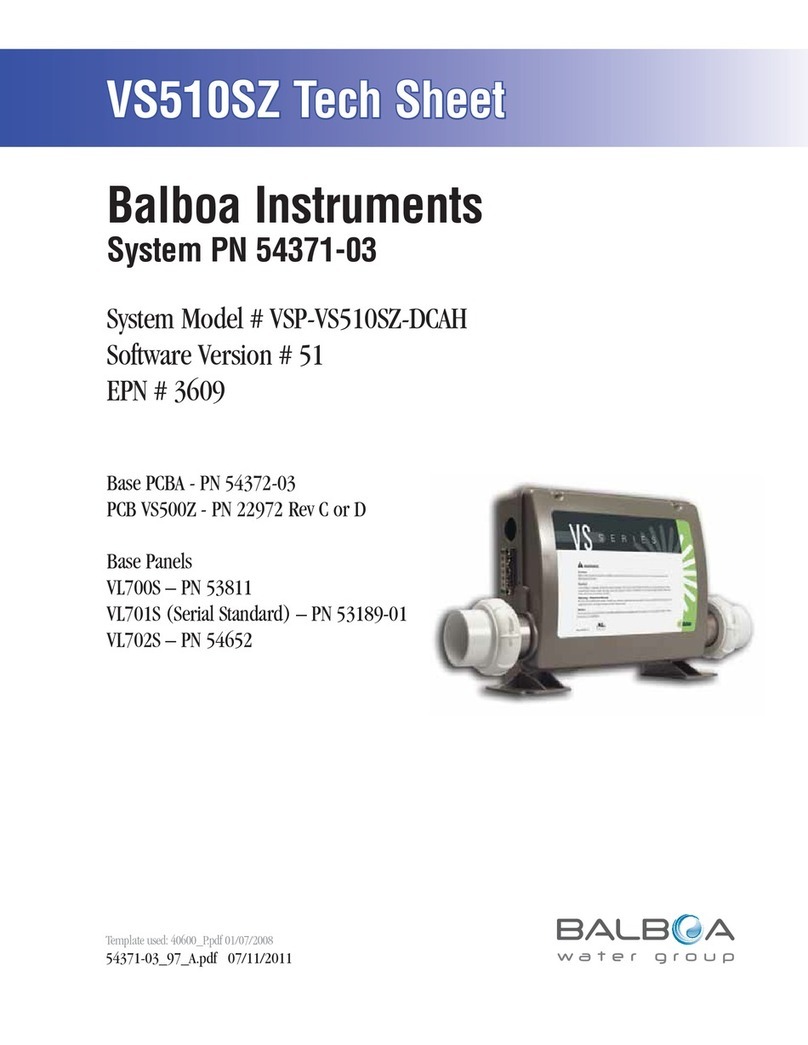
Balboa Instruments
Balboa Instruments VSP-VS510SZ-DCAH Tech sheet
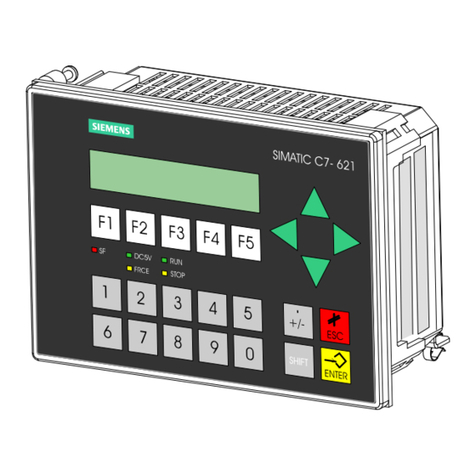
Siemens
Siemens simatic c7-621 Hardware installation guide

Carrier
Carrier AQUASNAP 30RA/RH Operation & maintenance instructions

Mazak
Mazak STX SC L PLUS CONTROL Training manual
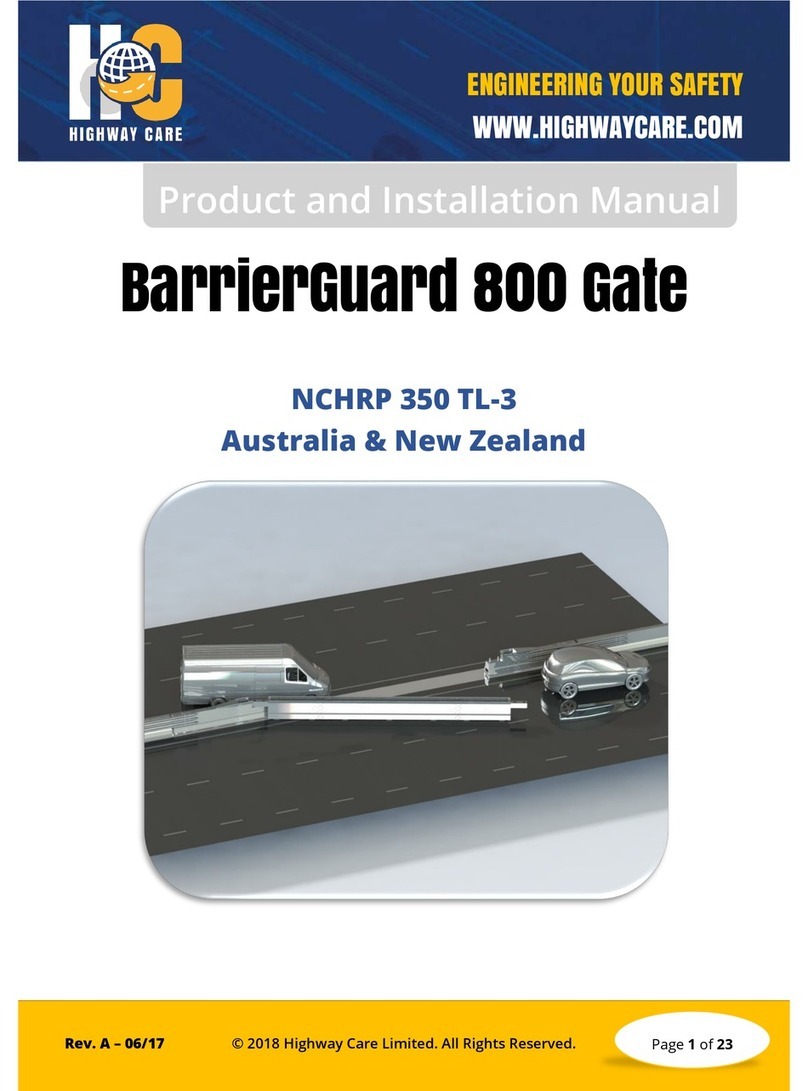
Highway Care
Highway Care BarrierGuard 800 Product and installation manual
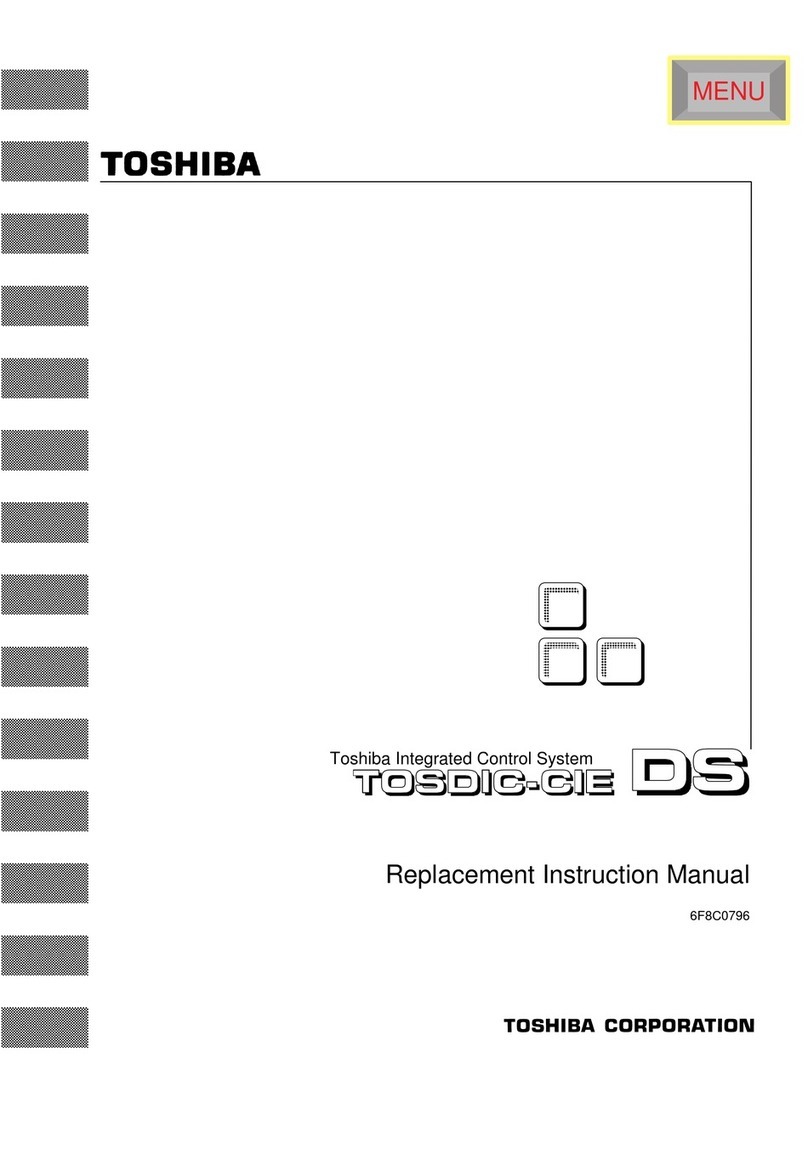
Toshiba
Toshiba TOSDIC-CIE DS instruction manual
